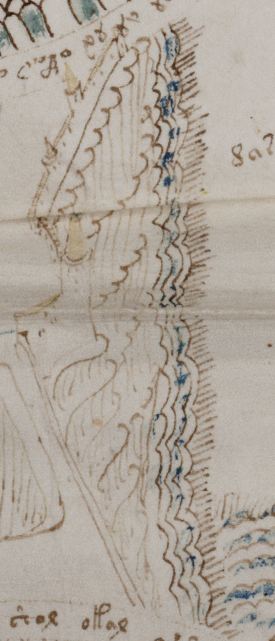 |
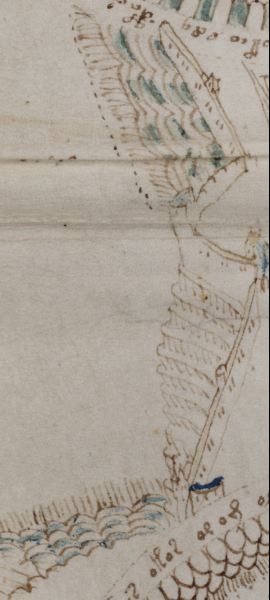 |
 |
| Here we seem to see a castellated wall along the top of a ridge. On the right the ground seems to drop off precipitously. | Again we seem to have a wall along the top of a ridge with the ground falling away to the left. | Here we surely have a ridge with a wall along the top, with the ground falling off on both sides. |
 |
 |
| Here lines descend from these forms, suggesting they are emanating some substance, perhaps water of vapour. | Again from this matrix of overlapping circular forms, something descends, and here seems to coalesce into streams. Note the flow patterns like tributaries of a river. Can this be anything except a representation of water? |

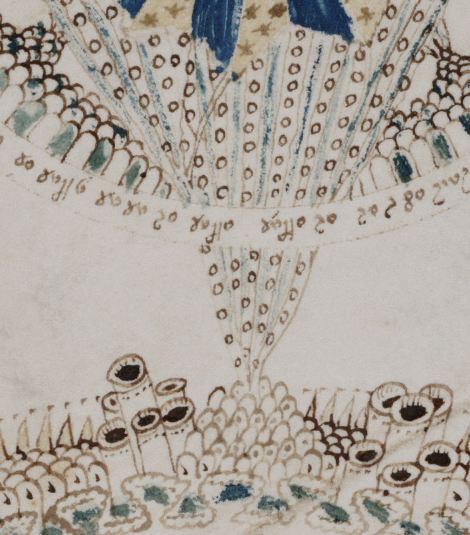 |
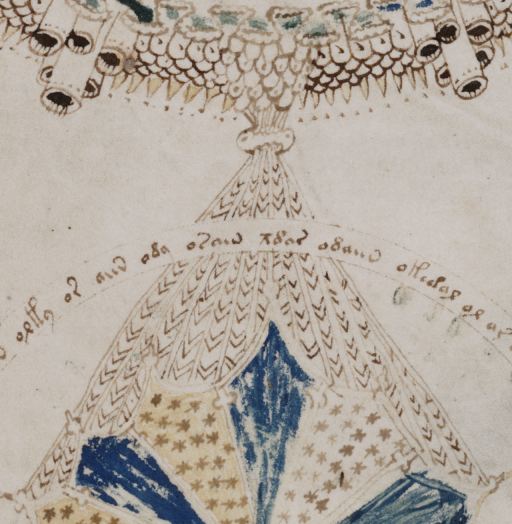 |
| At the top of the large circle little circles stream out from the matrix structure and fan out in a series of 10 or so lines, pouring into or penetrate the circle above it. This has added blue-green colour in lines, and thus might represent water flowing. | At the bottom of the large circle little chevron forms stream and fan out from another matrix in a series of 10 or so lines penetrating the circle below it. These chevron lines are not coloured. |
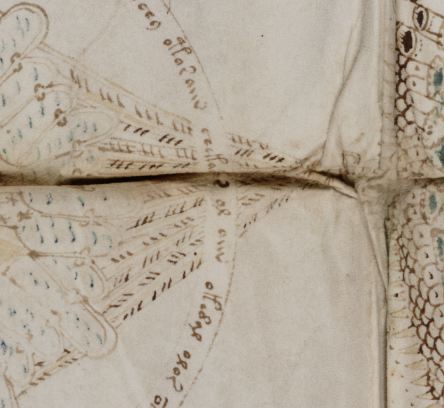 |
 |
| To the left of the large circle, lines bearing slanting three-stroked forms stream and fan out from the matrix structure in a series of 10 or so lines and pour into or penetrate the circle to the left. These lines are not coloured. The vellum has become rather puckered in a fold but the details can be seen. | To the right of the large circle, lines again bearing three-stroked forms stream and fan out from another matrix in a series of 10 or so lines penetrating the circle to the right. These three-stroked lines seem slightly different from those on the left as they appear more upright, though this may just be the way the artist held his pen. Thus the emanations to the left and right might be the same substance. |
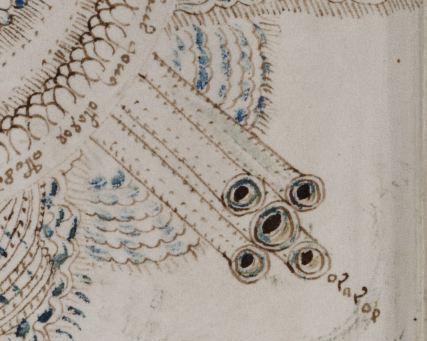 |
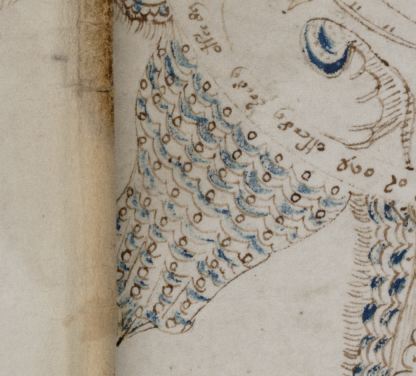 |
| The circle at the top left seems to be fed by some pipework. A bundle of five pipes is clearly shown. The openings of the pipes have blue colouring added, which could indicate that they carried water. Of course even in Roman times such pipework was constructed. | With the circle at the top right there is a flow of material from an area immediately adjacent. Here we see little circles, like as we saw flowing from the top of the large inner circle, but here they are not radiating in lines but rather in little blue wave-like forms. Again the vellum is pinched in a fold, but it appears that these circles emerge from a point and ray out. |
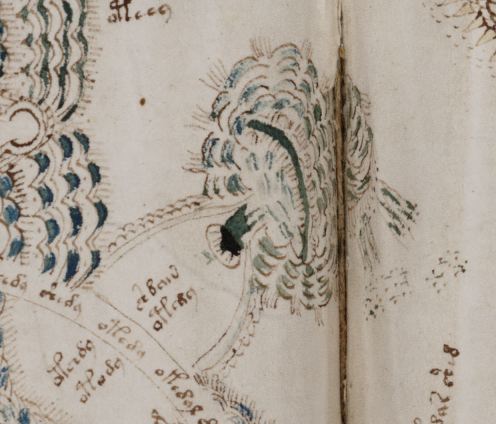 |
 |
| The circle at the bottom left is related like the others to an adjacent structure. Here it is rather difficult to read and make sense of. The little semicircles and the parallel drawn lines we have seen elsewhere on this page represent an escarpment and its base. So this appears to be a little mound connected to the circle by a ridge. Where the ridge meets the mound there is a large blob of blue-green pigment which ends at what could be a hole. Could we see this as a kind of natural pipe, a tunnel or cavity in the rock throught which the water streams? It is more difficult to read this image than the others. | With the circle at the bottom right we are back on more familiar and readable territory. Here we clearly see the little circles with applied blue colour, as being related to the flow from the top of the central circle. Unfortunately the fold in the vellum has obscured the origins of this stream. |